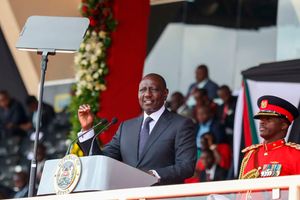Premium
It’s not just fire-fighting for PR teams

PR practitioners are often left out in the planning and execution of major organisational undertakings.
What you need to know:
- PR practitioners are often called upon to help manage a crisis arising from organisation’s execution of its plans.
- Such crises could have been prevented had the PR practitioners been involved in the planning stage.
Public Relations (PR) is a key cog in the machinery of any functional organisation as it entails creating goodwill between the organisation and its stakeholders.
This makes PR central to strategic planning as well as organisational goal setting and execution. James Grunig, a PR theorist-cum communications professor and author, noted that “involvement in strategic management is the critical characteristic of excellent PR”.
It is, however, quite befuddling that PR practitioners are often left out in the planning and execution of major organisational undertakings. More often than not, they are called upon to help in marketing the endeavour or worse still, to manage a crisis arising from the organisation’s execution of its plans. This is avoidable because in some cases, such crises could have been prevented had the PR practitioners been involved in the planning stage.
Who is to blame for this? In my opinion, communication professionals are to blame. Hear me out. I believe that in this world nothing is given. Anything worthwhile must either be taken or earned. And in this case we must earn our seat on the table.
Concepts of PR measurement
Research carried out by the Public Relations Society of Kenya (PRSK) in 2019 revealed two main challenges to PR operations both in the public and private sectors. One, there was a glaring lack of acknowledgement and understanding of the importance of PR to organisational functions. Second is the inability to measure the impact of PR.
The good news is that by using acceptable concepts of PR measurement such as the Barcelona Principles (also known as the AMEC Framework), we can quantify PR outcomes in numerical form and make a compelling case to top management.
The Barcelona Principles outline the importance of setting measurable goals, prioritising measurement of effect on outcomes as opposed to outputs, and measuring effects of PR efforts on business results where possible. The principles also insist on the importance of measuring PR programmes in terms of both quantity and quality, as well as measuring social media campaigns.
All measurements should be done in a transparent and replicable manner, as this lends credibility to the whole process, especially to non-PR personnel.
Top-level decision-making
The third principle in the AMEC Framework will give us the most mileage. This principle measures the impact of communication initiatives on organisational goals such as market share and sales volumes.
Such figures are relatable to other factions of the organisation, which are responsible for strategic decisions. This means we can clearly articulate our contribution to the attainment of the organisation’s objectives.
Once our demand to sit at the big table has been realised, it is then imperative that PR professionals present data-driven ideas in alignment with the organisation’s objectives.
This will not only justify inclusion in top-level decision-making, it will also dislodge the notion that PR practitioners are fire fighters, whose skills are only needed in crises or worse, ushers and escorts to be seen during events, but never heard in boardrooms.
Ms Mwende is a stakeholder engagement and media management specialist.





